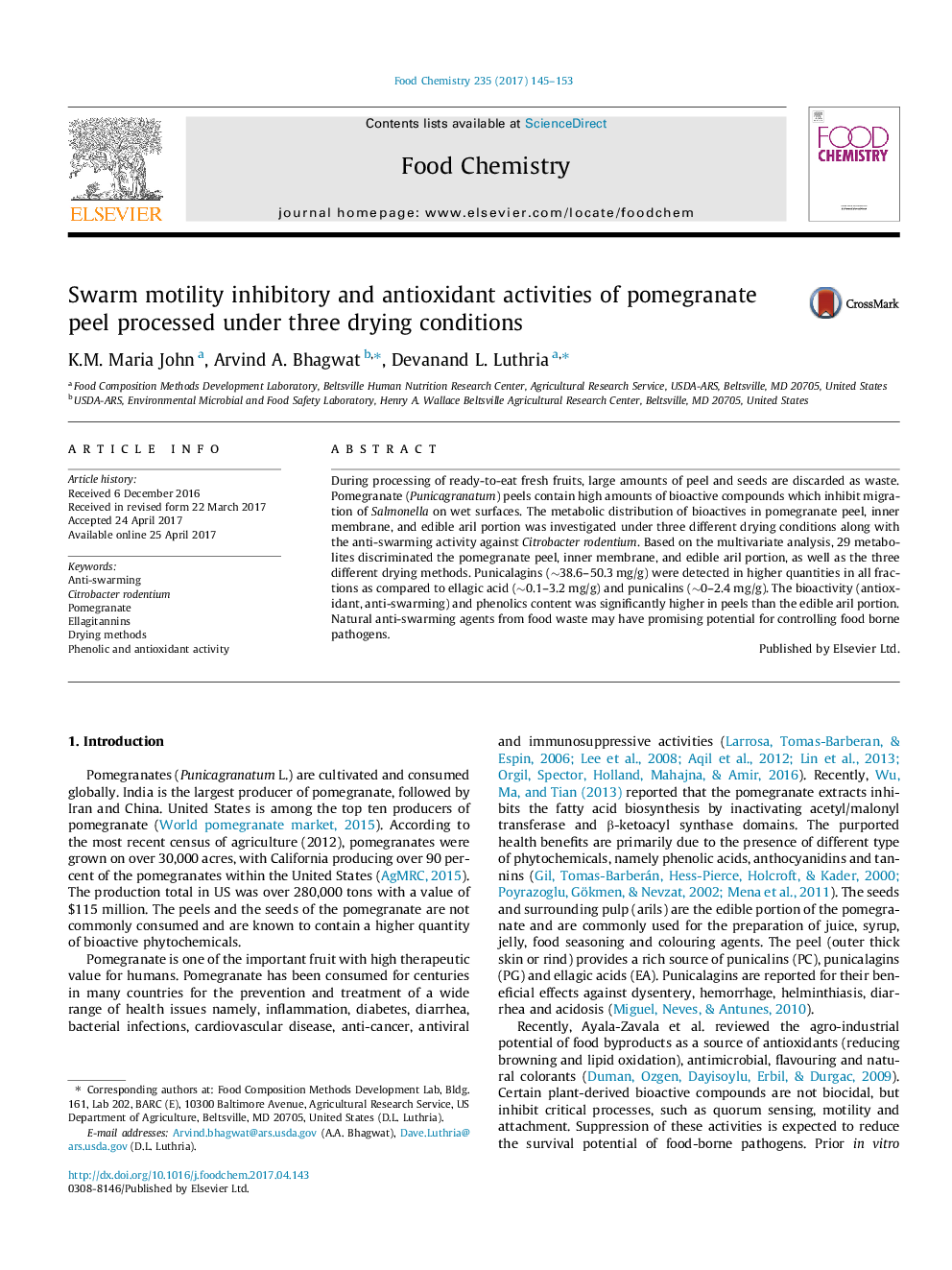| Article ID | Journal | Published Year | Pages | File Type |
|---|---|---|---|---|
| 5133345 | Food Chemistry | 2017 | 9 Pages |
â¢Extraction and analysis of ellagitannins from pomegranate peels and arils.â¢Natural anti-swarming agents from food waste.â¢Effect of three drying methods on ellagitannins content and anti-swarming activity.â¢Ellagitannins analyzed were punicalins, punicalagins, and ellagic acid.â¢Ellagitannins content in peels were in higher quantity than edible aril portion.
During processing of ready-to-eat fresh fruits, large amounts of peel and seeds are discarded as waste. Pomegranate (Punicagranatum) peels contain high amounts of bioactive compounds which inhibit migration of Salmonella on wet surfaces. The metabolic distribution of bioactives in pomegranate peel, inner membrane, and edible aril portion was investigated under three different drying conditions along with the anti-swarming activity against Citrobacter rodentium. Based on the multivariate analysis, 29 metabolites discriminated the pomegranate peel, inner membrane, and edible aril portion, as well as the three different drying methods. Punicalagins (â¼38.6-50.3Â mg/g) were detected in higher quantities in all fractions as compared to ellagic acid (â¼0.1-3.2Â mg/g) and punicalins (â¼0-2.4Â mg/g). The bioactivity (antioxidant, anti-swarming) and phenolics content was significantly higher in peels than the edible aril portion. Natural anti-swarming agents from food waste may have promising potential for controlling food borne pathogens.
